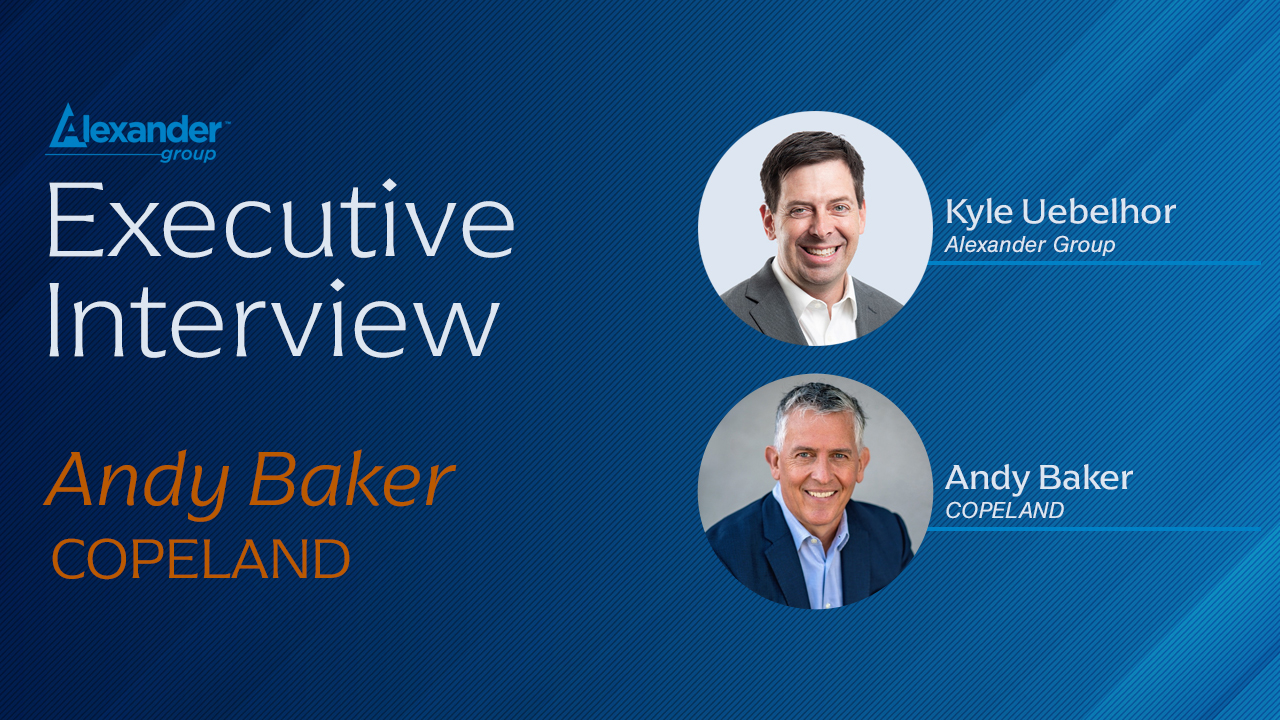Kevan Savage: Welcome to today’s session around demand generation performance and investment, prioritizing pipeline quality over quantity. My name is Kevan Savage. I’m a principal at Alexander Group. I run our marketing practice. I’m joined by Andrew Horvath, who’s a principal in the firm as well, and co-leads our Manufacturing and Distribution practice. Andrew, thank you so much for joining us today.
Andrew Horvath: My pleasure. Good to see you, Kevin.
Kevan Savage: So, for the audience, we commissioned a study and research around demand generation to really focus in on a few different areas. It’s around investment. It’s around performance and structure. It’s around the qualification rates we’re seeing as it relates to demand generation. And, of course, the thing that everybody cares most about the revenue generation and returns from those investments. And so we’re going to talk a little bit about some macro-level trends we’re seeing, and then more specifically some new stats that are coming hot off market in terms of where companies are looking to invest in terms of those profiles and what they’re getting in return. So to start, we know that demand generation habits are changing. Pre-pandemic, post-pandemic, things are heated up. And one of the attributes we wanted to do as we got our participants for this study is we wanted a good cross-section of what we call healthier organizations. Organizations that were on track to exceed their revenue expectations for the year, average growth rates of 6 to 10%. And the reason for that is when we talk about demand generation as Alexander Group, we want to position demand generation as an incremental accelerator to company growth, as opposed to, we’re behind plan, how do we use demand generation to get to plan. So, some of the stats we’re going to share with you today in the trends are for healthier organizations. And I’m going to share those verbally now and talk through some of the other industry trends with Andrew. So investment, our participants told us 23% year over year investments in demand generation growth. And we define that as internal personnel focused around demand generation. So digital marketing team members, SDRs, BDRs, resources focused on demand generation internally in addition to external program and agency spend. So 23% year on year is an interesting stat. But a couple trends emerged from some of our participants. One was around AI. AI Is everywhere, for everyone, for everything, but more specifically AI for SEO, Mid-funnel, content development. Education centers, knowledge hubs, areas of content that marketers historically have not been able to get to, that they’re now looking to join our demand generation efforts to to get better conversion. Another point surfaced around account-based marketing, not just the theory of account-based marketing, but the practical implementation of investment to tiered segmentation to drive coverage and conversion with sales teams very different than what we’ve seen before. And another point around virtual forums and roundtables, events, conferences, webinars, those are still in play. Those are important for brand events and things along those lines., brand presence. But finding new KOLs, new thought leadership, smaller settings to drive better conversions. That’s what our marketers have told us from this study. So 23% year-over-year growth in investments. We asked a series of questions around who’s driving pipeline from a performance and structure standpoint. Our participants reported 35% of the pipeline is coming from marketing versus other functions in their organizations. It’s a pretty healthy number. And then in terms of qualification rates, we asked questions around how are you driving better qualification of a marketing qualified lead to a sales accepted lead. 53% year-over-year qualification rate increases reported by our participants. So that’s an early signal for the bottom-of-funnel performance, which was reported as a 5% growth in terms of closed won revenue year over year. So what that told us in the research is that the funnel velocity is increasing, the quality is improving, and there’s about to be some significant pull through from these demand generation efforts in closed won revenue from manufacturers and transportation organizations. So that’s a little bit of our findings from the research. I want to hear from the heart of what Andrew seen with our clients from a vertical standpoint, from manufacturing and transportation companies. Andrew, maybe a first question to tee it up, you know, what are you hearing? What are some of the challenges that your clients express as it relates to demand generation that you’re hearing kind of day in and day out?
Andrew Horvath: Yeah, I think it all goes back to the fact that in the manufacturing and distribution space, you’ve got a lot of links in the chain. So, compared to a software company where maybe you’re selling more to a direct user or end user, in manufacturing, you work through agents who work for distributors, who work through dealers, potentially who work through influencers like contractors or EPCs, ultimately going to the end user. So having that many links in the chain, it’s very difficult to, first of all, target where that demand gen goes. Do you blanket the entire value chain or do you pick one part in particular? And you think about some of the folks that are emerging now contractors, EPCs, a lot of the decision-making in the demand gen potential rests there. That’s one area. It’s the complexity of the whole where you focus demand gen, then you’ve got the whole capability piece. With all the folks that are all the players in that group, do you expect your channel management team, if you’re a manufacturer, to be really good at demand gen? Do you expect your distribution partners to be really good at demand gen? It’s kind of all over the board in terms of your partners that you’re working with as well as your direct people, the capabilities of actually, creating leads, closing leads, and executing on demand gen strategy. So that complicates things. Consistency, so with all these different touch points to a customer or to an influencer, it kind of goes into the issue with, how we present a consistent message to the audience that we’re targeting without having a thousand different voices saying something different in the room. So consistency is a big issue. And then attribution is huge, right? So we struggle a lot with when you create demand in that end user or that contract space or the influencer space and someone goes and buys from a distributor, without great point of sale data, which some distributors give, others don’t. And it also depends what supplier they’re working with. It’s tough to understand where that lead originated from. So perfect data would help with that, but that’s not really happening in the industry, at least right now.
Kevan Savage: We talked a little bit about demand generation investments. And those are, you know, increasing quite significantly. What would you expect in some of our organizations out there in terms of how’s it going to influence partner dealer activities, what are you seeing out there as some emerging trends or best practice in that space?
Andrew Horvath: So one of the big shifts that we’ve seen start a couple years ago and it’s really accelerated over the past year or two, is if you think about from a manufacturing point of view, the sales model changes from a very sort of channel management approach where the channel manager relies on their distribution channel to generate a bunch of leads to more of a direct demand gen approach. So, roles like a field marketing specialist that gets parachuted into a particular region where there’s enough density and revenue and opportunity to have feet on the street, actually go drive demand with contractors. That’s been a big change and the impact on the sales team is that when we have a territory manager that’s managing channel leave the organization, there’s not the immediate backfill into that role anymore. There’s a consideration of, well, for one of those roles, we could afford two field demand specialists. So, there’s a headcount and deployment issue. And then when you think about the, uh, the role of that channel manager as impacted by the field demand specialist, now there’s that extra push towards convert more new revenue, be it from new contractors, new end users, possibly turning on new distribution channels as well. So going for more of a retain and expand mode to a convert, retain and expand expectation for that channel manager.
Kevan Savage: Well, we’re going to keep this short because we have a full briefing on the demand generation, performance and investment study that the audience is welcome to request as a complimentary briefing to your organizations. Andrew, I want to thank you for your time and insights today. In terms of engaging with the Alexander Group, we are constantly publishing best-in-class research from the market. We obviously have other ways to engage around our Research & Benchmarking Program, which is a subscription service that you’re all welcome to entertain. And then, of course, we have our go-to-market consulting engagements, where we’re constantly partnering with organizations like you to transform the way you go to market. So, thank you all for your time today. We hope you enjoyed the snippet here around demand generation, performance and investment. If you’d like to learn more, please visit AlexanderGroup.com.







